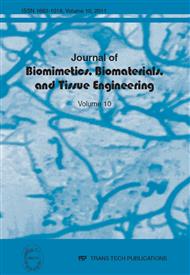p.1
p.7
p.17
p.25
p.43
p.55
p.67
p.75
Clinical Significance of Aspirin on Blood Flow through Stenotic Blood Vessels
Abstract:
In this present study a two-phase model for the influence of aspirin on peripheral layer viscosity for physiological characteristics of blood flow through stenosed blood vessels using Casson’s fluid model has been obtained. Flow of blood with axially non-symmetric but radially symmetric stenosis geometry is considered. The non-linear pressure equations have been solved with help of boundary conditions and the results are displayed graphically for different flow characteristics. It was found that the resistance to flow decreases as stenosis shape parameter increases whereas the resistance to flow increases with increasing values of stenosis length, stenosis size and peripheral layer viscosity. The effects of stenosis severity and wall shear stress are discussed in the present computational analysis. Comparisons between the measured and computed peripheral layer viscosity profiles are favourable to the solutions. As a result it can be concluded that a regular dose of Asprin decreases the blood viscosity by diluting the blood of diabetic patients which ultimately decreases the blood pressure. For the validation of the numerical model, the computation results are compared with the experimental data and results from published literature.
Info:
Periodical:
Pages:
17-24
Citation:
Online since:
May 2011
Authors:
Price:
Сopyright:
© 2011 Trans Tech Publications Ltd. All Rights Reserved
Share:
Citation:


